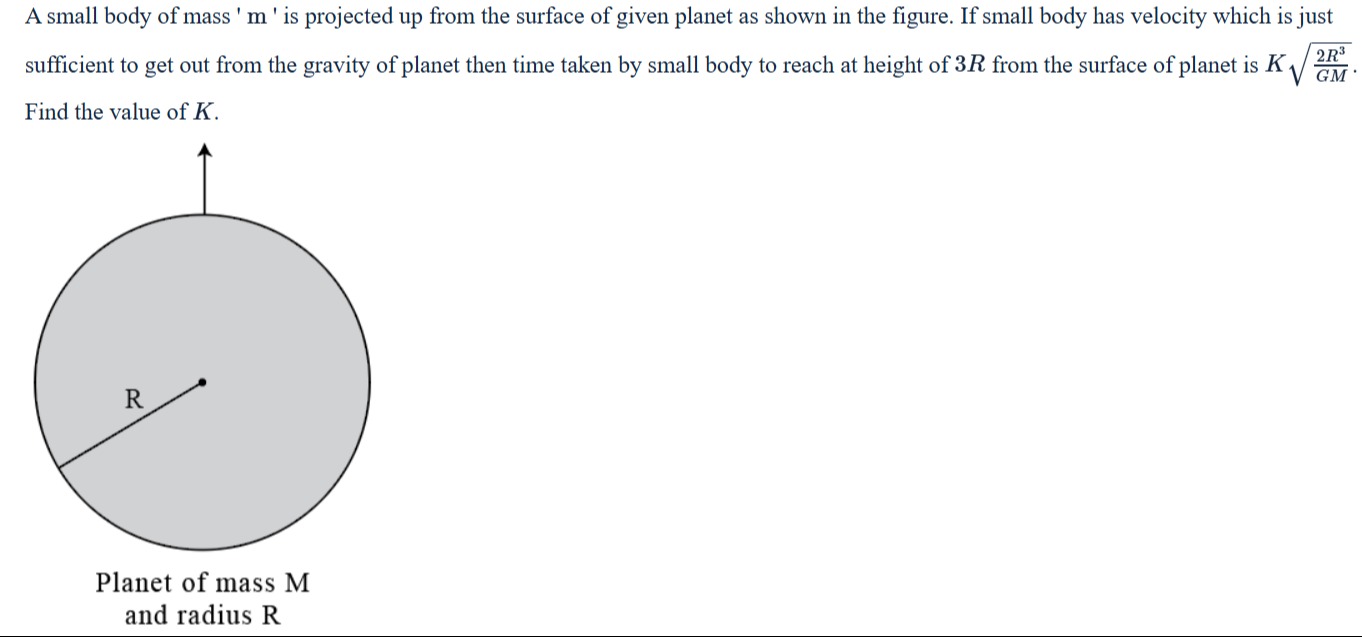Question
Question: A small body of mass 'm' is projected up from the surface of given planet as shown in the figure. If...
A small body of mass 'm' is projected up from the surface of given planet as shown in the figure. If small body has velocity which is just sufficient to get out from the gravity of planet then time taken by small body to reach at height of 3R from the surface of planet is KGM2R3.
Find the value of K.

7/3
Solution
The initial velocity of the small body is the escape velocity from the surface of the planet, which is v0=R2GM.
Let r be the distance of the body from the center of the planet at time t. The initial position is r0=R. The final position is rf=R+3R=4R.
By conservation of energy, the total energy of the body is constant.
Initial total energy Ei=21mv02−RGMm=21m(R2GM)2−RGMm=21mR2GM−RGMm=RGMm−RGMm=0.
At any distance r from the center, the velocity is v=dtdr. The total energy is E(r)=21mv2−rGMm.
Since energy is conserved, E(r)=Ei=0.
21mv2−rGMm=0
21mv2=rGMm
v2=r2GM
Since the body is moving upwards, v=dtdr>0.
dtdr=r2GM
To find the time taken to reach rf=4R from r0=R, we integrate:
dt=r2GMdr=2GMrdr
t=∫R4R2GMrdr=2GM1∫R4Rr1/2dr
Evaluating the integral:
∫r1/2dr=1/2+1r1/2+1=3/2r3/2=32r3/2
t=2GM1[32r3/2]R4R=2GM1(32(4R)3/2−32R3/2)
t=32GM2((43/2R3/2)−R3/2)=32GM2((22)3/2R3/2−R3/2)
t=32GM2(23R3/2−R3/2)=32GM2(8R3/2−R3/2)
t=32GM2(7R3/2)=32GM14R3/2
We are given that the time taken is KGM2R3. We need to express our result in this form.
t=3142GMR3/2=3142GMR3=3142GMR3
We want the term GM2R3 inside the square root.
2GMR3=412GM4R3=412GM2⋅2R3=41GM2R3=21GM2R3
So, t=314×21GM2R3=37GM2R3.
Comparing this with the given form KGM2R3, we find K=37.
